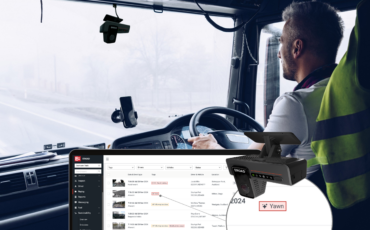Five tips to avoid common pitfalls when choosing new business technology
Five tips to avoid common pitfalls when choosing new business technology
When it comes to critical technology investment, how does your business make decisions? Making the right choices for your business today could help you to enhance resilience, attract and retain talent, achieve ESG goals, and drive growth1.
We’ve put together our top tips for evaluating technology, based on thousands of discussions and learnings we’ve had with customers and prospective customers over the last decade.
1. Focus on Return on Investment
When it comes to business technology, it’s not always easy to compare apples with apples.

Cost is important, but it shouldn’t be your only consideration. A lower price usually means sacrificing some features or services. While that might look attractive initially, it ignores savings or productivity uplifts that could be made from those additional features or services.
When you’re considering fleet management technology, the right set of features and services can save your business time and money.
By understanding the potential Return on Investment (e.g. savings on fuel, wages or taxes), you’ll be better placed to make a decision based on the overall value to your business.
2. Consider both current and future requirements
It’s not always clear what you’re going to need from your technology solutions in the next 5 years. Shifting customer trends, global crises and new regulations are just a few of the ways businesses need to adapt over time. What you need from your technology today may look quite different to what you need in 5 years’ time. How can you plan for the unforeseen?
When assessing new technology, firstly make sure the company understands and keeps up with market changes. What does their innovation look like? Are they releasing new products and features?
Secondly, look for technology that is customisable or modular, with components that can be added or changed. While there will be some exceptions, a system that promises ‘one size fits all’ could become burdensome or difficult to use due to features or services that aren’t relevant. Or it may be too simplistic, meaning you need to implement workarounds or additional solutions to bridge feature gaps.
Customisable solutions, tailored pricing packages and software add-ons provide an affordable, yet flexible way to meet your needs today, and into the future to help fuel your business growth.
3. User-friendliness is key
Technology needs to be easy to use or you run the risk of teams reverting to old processes and workarounds.
The best technology companies invest in the user experience. A user-friendly system will be intuitive to navigate without specialist training.
It can be hard to understand how a platform will work from descriptions alone. Make sure you watch videos that showcase how it looks, or typical user journeys. Most technology companies these days will offer free demos of their software too, so make the most of these in your early research.
4. Listen to the end users
Businesses can’t consult everyone on every decision, but when it comes to technology, you depend on the people who use it every day to derive the business value from it. Without talking to your users, you could risk over-stating (or under-stating) business benefits.
Additionally, your users will help you to understand the training requirements or process changes that may be needed to support a successful implementation. By involving them earlier in the decision-making process you can develop better buy-in and a sense of ownership amongst them too.
5. Plan for change management
Bringing new technology into your business will mean change. Even good changes need to be managed well if you want to ensure success. Your team will need to understand what’s changing, why and how it affects them.
It starts with good communication. Start planning for the change in advance of any roll out to ensure you start to reap the benefits of the new technology as early as possible.
By following these guidelines, businesses can make informed technology decisions that drive growth, enhance efficiency, and future-proof their operations. At EROAD, we’ve helped countless businesses over the last 15 years, to successfully onboard our fleet management software, ensuring they maximise the benefits of their investment.
Explore our solutions, or ask us about a free demo.
“EROAD is integral to our business and how we manage the fleet and the health and safety of our people, they’re more than just a telematics provider. They work with us in a partnership, they understand our business, and they’re genuinely interested in how they can ensure their product works in the best way possible for us. I believe their product suite is one of the best available.” – Downer New Zealand
Ready to step into the future of fleet management?
Let EROAD show you why thousands of Kiwi, Australian and US businesses are using telematics technology to run their businesses better.












